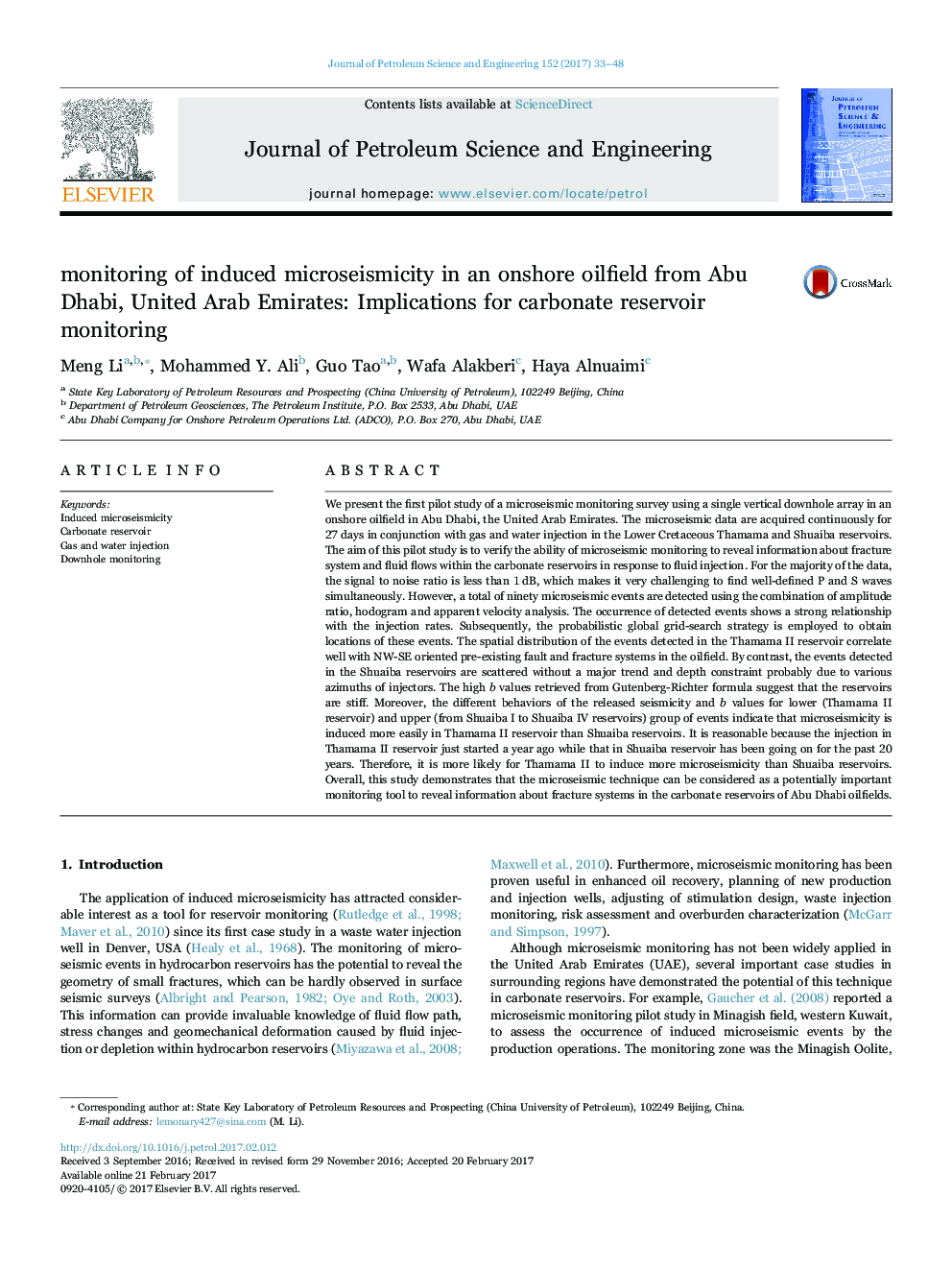| کد مقاله | کد نشریه | سال انتشار | مقاله انگلیسی | نسخه تمام متن |
|---|---|---|---|---|
| 5484254 | 1522789 | 2017 | 16 صفحه PDF | دانلود رایگان |
عنوان انگلیسی مقاله ISI
monitoring of induced microseismicity in an onshore oilfield from Abu Dhabi, United Arab Emirates: Implications for carbonate reservoir monitoring
ترجمه فارسی عنوان
نظارت بر میکروزیسم بودن القا شده در یک میدان نفتی ساحلی از ابوظبی، امارات متحده عربی: پیامدهای نظارت بر مخزن کربنات
دانلود مقاله + سفارش ترجمه
دانلود مقاله ISI انگلیسی
رایگان برای ایرانیان
موضوعات مرتبط
مهندسی و علوم پایه
علوم زمین و سیارات
زمین شناسی اقتصادی
چکیده انگلیسی
We present the first pilot study of a microseismic monitoring survey using a single vertical downhole array in an onshore oilfield in Abu Dhabi, the United Arab Emirates. The microseismic data are acquired continuously for 27 days in conjunction with gas and water injection in the Lower Cretaceous Thamama and Shuaiba reservoirs. The aim of this pilot study is to verify the ability of microseismic monitoring to reveal information about fracture system and fluid flows within the carbonate reservoirs in response to fluid injection. For the majority of the data, the signal to noise ratio is less than 1Â dB, which makes it very challenging to find well-defined P and S waves simultaneously. However, a total of ninety microseismic events are detected using the combination of amplitude ratio, hodogram and apparent velocity analysis. The occurrence of detected events shows a strong relationship with the injection rates. Subsequently, the probabilistic global grid-search strategy is employed to obtain locations of these events. The spatial distribution of the events detected in the Thamama II reservoir correlate well with NW-SE oriented pre-existing fault and fracture systems in the oilfield. By contrast, the events detected in the Shuaiba reservoirs are scattered without a major trend and depth constraint probably due to various azimuths of injectors. The high b values retrieved from Gutenberg-Richter formula suggest that the reservoirs are stiff. Moreover, the different behaviors of the released seismicity and b values for lower (Thamama II reservoir) and upper (from Shuaiba I to Shuaiba IV reservoirs) group of events indicate that microseismicity is induced more easily in Thamama II reservoir than Shuaiba reservoirs. It is reasonable because the injection in Thamama II reservoir just started a year ago while that in Shuaiba reservoir has been going on for the past 20 years. Therefore, it is more likely for Thamama II to induce more microseismicity than Shuaiba reservoirs. Overall, this study demonstrates that the microseismic technique can be considered as a potentially important monitoring tool to reveal information about fracture systems in the carbonate reservoirs of Abu Dhabi oilfields.
ناشر
Database: Elsevier - ScienceDirect (ساینس دایرکت)
Journal: Journal of Petroleum Science and Engineering - Volume 152, April 2017, Pages 33-48
Journal: Journal of Petroleum Science and Engineering - Volume 152, April 2017, Pages 33-48
نویسندگان
Meng Li, Mohammed Y. Ali, Guo Tao, Wafa Alakberi, Haya Alnuaimi,
